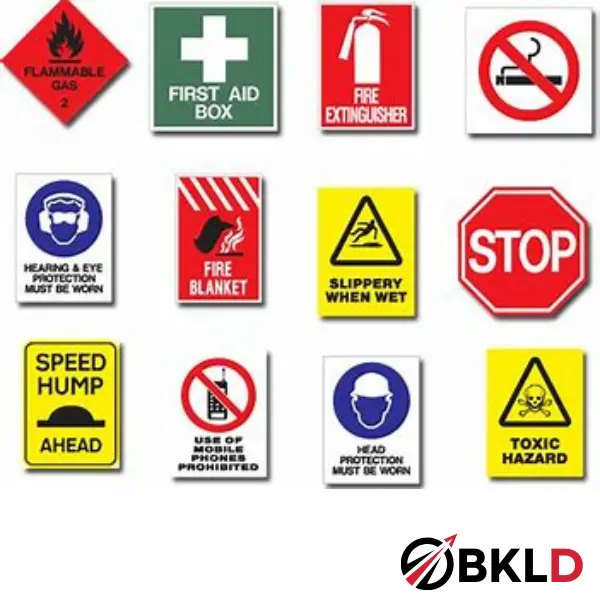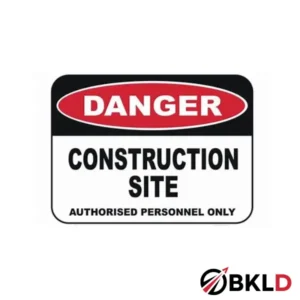Key Features:
- Variety of Sizes and Designs: Choose from a wide range of sizes to suit different areas of your workplace.
- Easy Installation: Our signs come with pre-drilled holes or adhesive backing for quick and hassle-free installation.
- Customizable Options: Need a specific message? BKLD offer customizable signs to meet your unique safety requirements.
Importance of Health and Safety Signs
Health and safety signs serve several vital purposes:
- Universal Communication: Symbols transcend language barriers, allowing workers from diverse backgrounds to understand potential hazards quickly.
- Hazard Awareness: They alert employees to specific dangers, enabling them to take necessary precautions. For example, a hazardous gas symbol indicates the presence of harmful gases, while accompanying signs provide further instructions, such as the need for protective gear. For quick warnings, also use our Labels & Stickers.
- Training Reinforcement: While safety signs cannot replace training, they act as important reminders, especially for those unfamiliar with specific areas or processes.
- Efficiency: Signs allow workers to identify hazards rapidly and make informed decisions to ensure their safety.
Key Categories of Health and Safety Signs
Most safety signs can be classified into four primary categories, each with its distinct color and shape:
- Prohibition Signs (Red): Indicate dangerous behavior that must be stopped. These are usually round with a black pictogram on a white background, bordered by a red line. Examples include “Do Not Enter” and “No Smoking.”
- Warning Signs (Yellow): Alert workers to potential hazards and the need for caution. These triangular signs feature a black pictogram on a yellow background. Examples include ‘Caution: High Voltage’ and ‘Beware of Dog.’ Complement with Construction Site Signage for a full safety solution.
- Mandatory Signs (Blue): Indicate actions that must be taken, such as wearing protective equipment. These are round with a white pictogram on a blue background. Examples include “Wear Safety Goggles” and “Use Hearing Protection.”
- Emergency Signs (Green): Provide information about emergency equipment and escape routes. These are rectangular or square, featuring a white pictogram on a green background. Examples include “Emergency Exit” and “First Aid Station.”
Additional Symbols for Hazardous Chemicals
Health and safety signs also play a critical role in communicating chemical hazards. The Globally Harmonized System (GHS) has established pictograms for chemical safety, which include:
- Health Hazard: Represents carcinogens, respiratory sensitizers, and reproductive toxins.
- Flame: Indicates flammable substances.
- Exclamation Mark: Warns about irritants and narcotic effects.
- Corrosion: Denotes corrosive materials that can damage skin or metals.
- Skull and Crossbones: Signifies acute toxicity, indicating materials that could be fatal or harmful. Check out Dibond Aluminium Signs for a durable alternative.
Common Safety Symbols
Some symbols are universally recognized, enhancing workplace safety:
- Biohazard: Indicates the presence of biological hazards, commonly found in laboratories and medical facilities.
- Emergency Shower: Marks the location of emergency showers for washing off hazardous materials.
- Radiation: Alerts workers to potential exposure to ionizing radiation.
- Electrical Hazards: Signs indicating live electrical equipment or high voltage areas.










Reviews
There are no reviews yet.